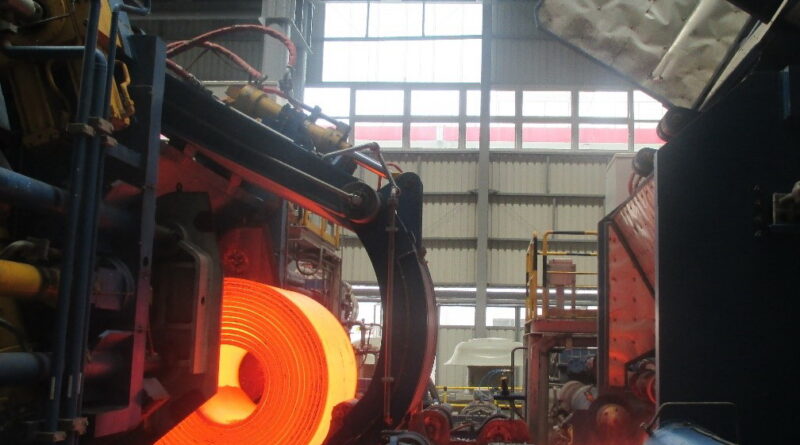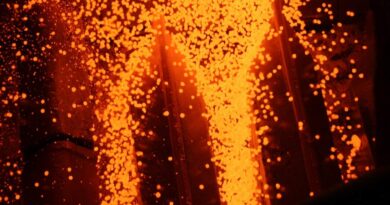worldsteel short range outlook for 2021 and 2022
The World Steel Association (worldsteel) has released an update of its Short Range Outlook (SRO) for 2021 and 2022. worldsteel forecasts that steel demand will grow by 4.5% in 2021 and reach 1,855.4 Mt after 0.1% growth in 2020.
In 2022, steel demand will see a further increase of 2.2% to 1,896.4 Mt. The current forecast assumes that, with the progress of vaccinations across the world, the spread of variants of the COVID virus will be less damaging and disruptive than seen in previous waves.
Commenting on the outlook, Mr Al Remeithi, Chairman of the worldsteel Economics Committee, said, “2021 has seen a stronger than expected recovery in steel demand, leading to upward revisions in its forecast across the board except for China. Due to this vigorous recovery, global steel demand outside China is expected to return earlier than expected to its pre-pandemic level this year.
Strong manufacturing activity bolstered by pent-up demand is the main contributor. The developed economies have outperformed the earlier expectations by a larger margin than the developing economies, reflecting the positive benefit of higher vaccination rates and government support measures. In the emerging economies, especially in Asia, the recovery momentum was interrupted by the resurgence of infections.
While the manufacturing sector’s recovery remained more resilient to the new waves of infection than expected, supply-side constraints led to a levelling off of the recovery in the second half of the year and are preventing a stronger recovery in 2021. But with high backlog orders combined with a rebuilding of inventories and further progress in vaccinations in developing countries, we expect steel demand will continue to recover in 2022.
Persistent rising inflation, continued slow vaccination progress in developing countries and further growth deceleration in China all pose risks to this forecast.”
CONSTRUCTION SECTOR
In general, the construction sector has remained more resilient than the manufacturing sector to the pandemic shock. However, in many developing economies, construction activity was severely disrupted by a total stoppage of projects. In 2021, the global construction sector is expected to show a robust recovery fuelled by low interest rates and governments focusing on infrastructure projects as part of their recovery plans.
The recovery of the construction sector is uneven across regions. In developing economies, ASEAN for example, where vaccination rates have been low, construction recovery has shown fragility. In contrast, in India, where there was recently a strong uptake in vaccinations, a positive rebound in construction activity is taking place.
In China, the construction sector is facing a turning point and the real estate sector is likely to enter a correction period as the government tries to tackle the sector’s structural problems.
The outlook for global infrastructure projects is affected by two conflicting forces. On the one hand, many governments are trying to use infrastructure as a recovery tool aligned with green initiatives, especially in the developed economies. On the other hand, governments’ fiscal position has worsened due to the pandemic. Many governments in developing economies will have reduced ability for financing infrastructure investment.
The residential sector has benefited from accumulated savings during the lockdown and the spread of working from home, which has resulted in rising demand for home space. The other side of the coin is that the non-residential sector will see a sluggish recovery due to reduced demand for office space.
AUTOMOTIVE
The automotive sector, which saw the sharpest decline among the steel using sectors during the lockdown in 2020, saw a strong recovery in the second half of 2020. Although supply chain disruption is still evident in some markets, the recovery is driven by pent-up demand and increased household savings.
In the US, light vehicle production regained its pre-pandemic level by the third quarter of last year, but it has been trending down since then, partly because of supply chain disruptions.
In the EU, a strong recovery is underway, and the EU automotive sector is expected to rebound by 15.3% in 2021. However, it is still far below its level when the manufacturing recession first started in 2018. The EU’s automotive sector faces uncertainty with component shortages and a weak prospect of demand due to general economic uncertainty.
In China, automobile production soared in the first half of this year. In particular, new energy vehicle production increased by almost 200% from January to August 2021, accounting for 11.2% of total vehicles produced in the same period.
The disruption in the supply chain is significantly undermining the global automotive industry’s recovery. With pent-up demand dissipating, the growth in auto production in 2022 will decelerate, though high order backlogs will provide some support.




